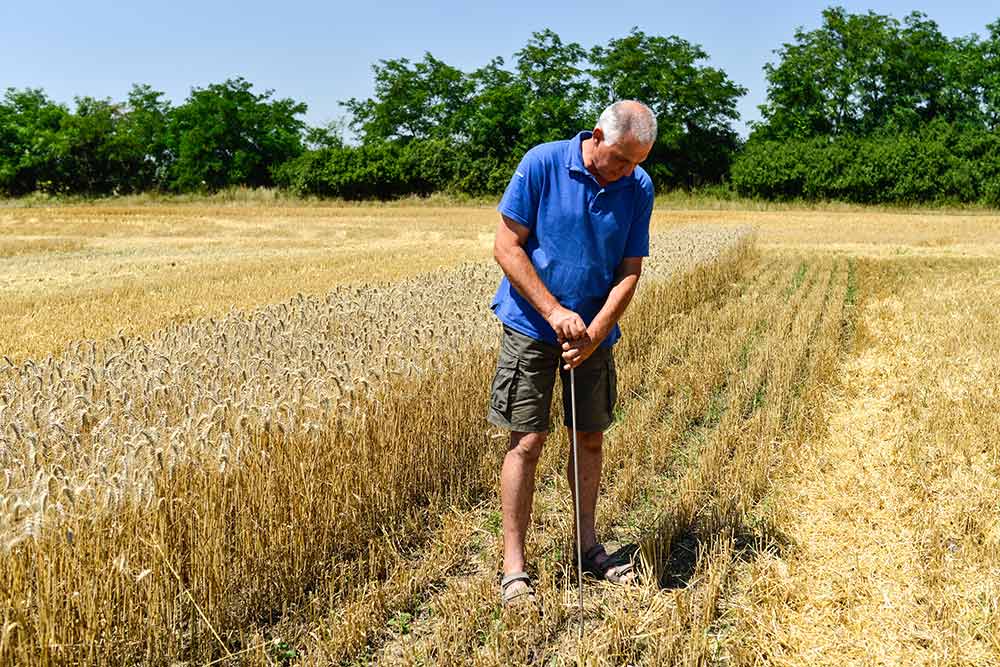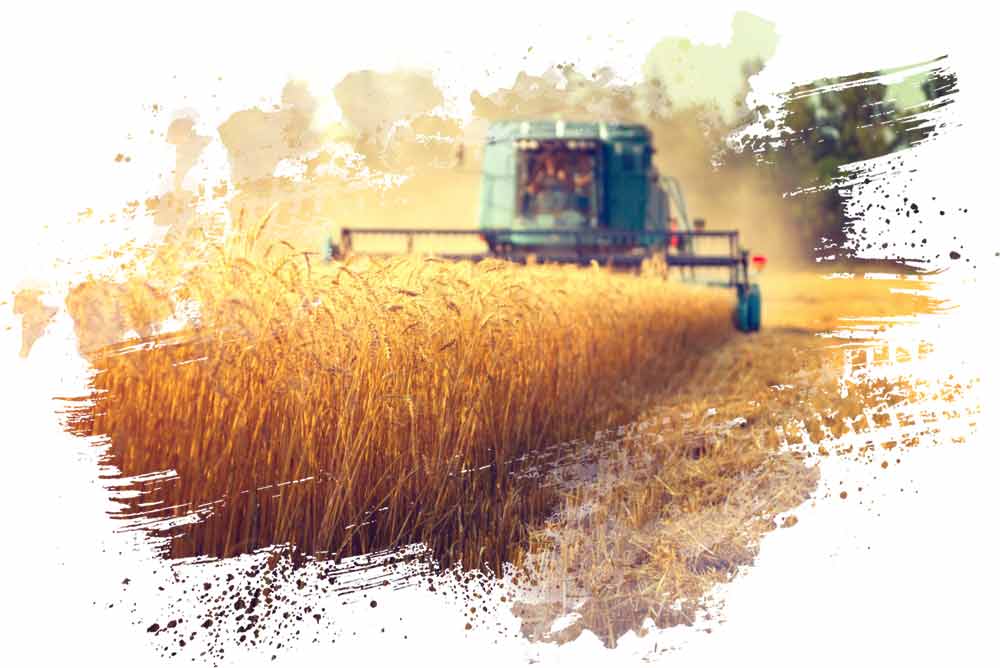Phylazonit Stubble Decomposer also proven itself with Colza!
“Our Mother Nature was not in the mood when granting farming conditions.” However, the head of the agricultural branch of Fauna Zrt. of Mezőtárkány does not complain but only talks about the problems to be solved. There is no reason to complain, as they far outperform the farms in the surrounding area by five times. For example, from rape 3.6 tonnes per hectare was produced mainly due to Phylazonite which is considered to be an outstanding yield here.
We meet József Kelemen at Mezőtárkány, in the headquarters of Fauna Zrt. in Heves County. The company operates in the border of a town having 1600 inhabitants. They are mainly engaged in agricultural production and services, where 980 hectares are intensively cultivated out of 1,200 hectares and the rest is sod.
They typically operate on flood zones. This area was once the flood zones of the river Tisza, with many rocky patches, some of which have naturally been formed, while others have become saline soil due to the poor agrotechnology used in previous decades. It was a common mistake that up until the early nineties many turf lands were broken up and cultivated, although these areas were grasslands for a reason. Here the weed bloomed again and again and it was almost impossible to rid of.

The climate is not really favorable either. There is little rainfall, as they say here, only every four years is “when God gives rain when the plant needs it.”
To the question of what gives them the biggest headache, József Kelemen gives a brief answer: “The minute soils. Unfortunately, there is a lot of soil around here where the time frame is very short for bringing the land into optimal crop condition. Here, the soil can be cultivated for just a few moments: it’s either too wet or too dry to produce good, quality seedbed. In these areas, speed plays a huge role.” he explains.
Four years with Phylazonit
Phylazonite has been used in the agricultural sector of Fauna Zrt. for four years. As József Kelemen remembers, they started to “get to know” the Stubble Decomposer product first which is especially important for them as most of the stalk is left on the field and only as much straw is harvested as the cattle farm needs.
“In the first period, we found that the fields treated with the bacterial compound performed spectacularly better. In the past two years we have also carried out measurements with the Phylazonit representatives, confirming that the leftover of the stems is significantly more decomposed compared to the untreated areas. Last year and this year, we are using the Stubble Decomposer on our entire rape, corn and sunflower sowing area and more recently the Energia Humin plant conditioner too.”
The Stubble Decomposer is delivered in one pass with stubble cultivation by an applicator mounted on a grubber or disc.
More friable soil, higher yields
According to József Kelemen, Phylazonit had the most spectacular effect on soil structure. “If I go out to a field treated with bacterial fertilizers where we have not been loosening the soil in the last five years, I can still stick my wand in the ground in the highest heat. After a year or two of using Phylazonite, the soil became more friable and the areas with high pore water pressure have decreased. Where water used to be in ponds, the field is now green. Even if there are water ponds here and there after some rainy days in spring, it quickly disappears in the ground, there are no flooded areas. So experience shows that Phylazonite has clearly improved soil structure.” – he explains.

The company operates mainly in nitrate-sensitive areas and the amount of nitrogen applied can not exceed 65 kilograms per hectare. Therefore, it is vital that the nutrient content of the stubble residue be digested as efficiently as possible and be absorbed by the plants. And the soil bacteria, backed up by Phylazonit in their multiplying and maintaining its optimal composition, are of a great help.
Colza is doing well out of Stubble Decomposer
There is also a noticeable change in yields. “The average yield for colza was three tons. Since the introduction of Phylazonit, higher yields have become commonplace. Colza produced 3.6 tons / hectare this year. This is almost 20% higher result than of the surrounding farms and the same is true for other crops.
Besides the rational choice of varieties, it is due to bacterial inoculation, Phylazonite, and the agrotechnology that best suits the needs of the soil. The crops are healthier, more resistant to diseases, develop faster, and overwinter better.
“I still think it was a good decision to incorporate Phylazonite Stubble Decomposer into our technology.
Last night, a neighbor called me and asked if it was worth to start using Phylazonit. Well, I can only recommend it to everyone. Of course, we are still exposed to the effects of the weather and the market but now we can do our best for better and safer results.”

